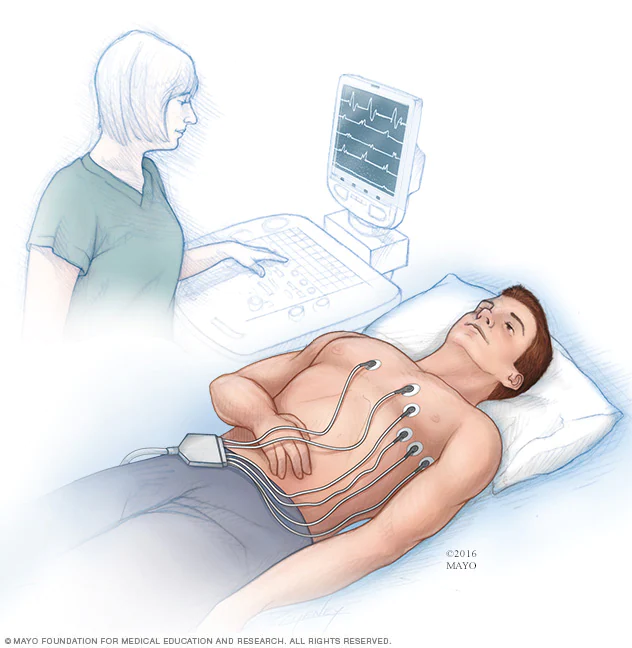ECG
An electrocardiogram records the electrical signals in the heart. It’s a common and painless test used to quickly detect heart problems and monitor the heart’s health.
An electrocardiogram — also called ECG or EKG — is often done in a health care provider’s office, a clinic or a hospital room. ECG machines are standard equipment in operating rooms and ambulances. Some personal devices, such as smartwatches, offer ECG monitoring. Ask your health care provider if this is an option for you.
Why it’s done

An electrocardiogram is a painless, noninvasive way to help diagnose many common heart problems. A health care provider might use an electrocardiogram to determine or detect:
- Irregular heart rhythms (arrhythmias)
- If blocked or narrowed arteries in the heart (coronary artery disease) are causing chest pain or a heart attack
- Whether you have had a previous heart attack
- How well certain heart disease treatments, such as a pacemaker, are working
You may need an ECG if you have any of the following signs and symptoms:
- Chest pain
- Dizziness, lightheadedness or confusion
- Heart palpitations
- Rapid pulse
- Shortness of breath
- Weakness, fatigue or a decline in ability to exercise
ECG procedure
There is no need to restrict food or drink before having an ECG test. Always let your doctor know what medications you are taking before you have an ECG, and if you have any allergies to adhesive tapes that may be used to attach electrodes.
When you go for an ECG test, you will need to remove your upper clothing so that electrodes can be attached to your chest and limbs., Wearing a separate top with trousers or a skirt can allow easy access to the chest. Underwire in a bra can interfere with the ECG reading – you may be asked to remove it before the test.
An ECG works best when the skin is clean and dry, and free of oils and lotions. The selected sites are shaved if necessary because hair prevents the electrodes from making proper contact with the skin.
